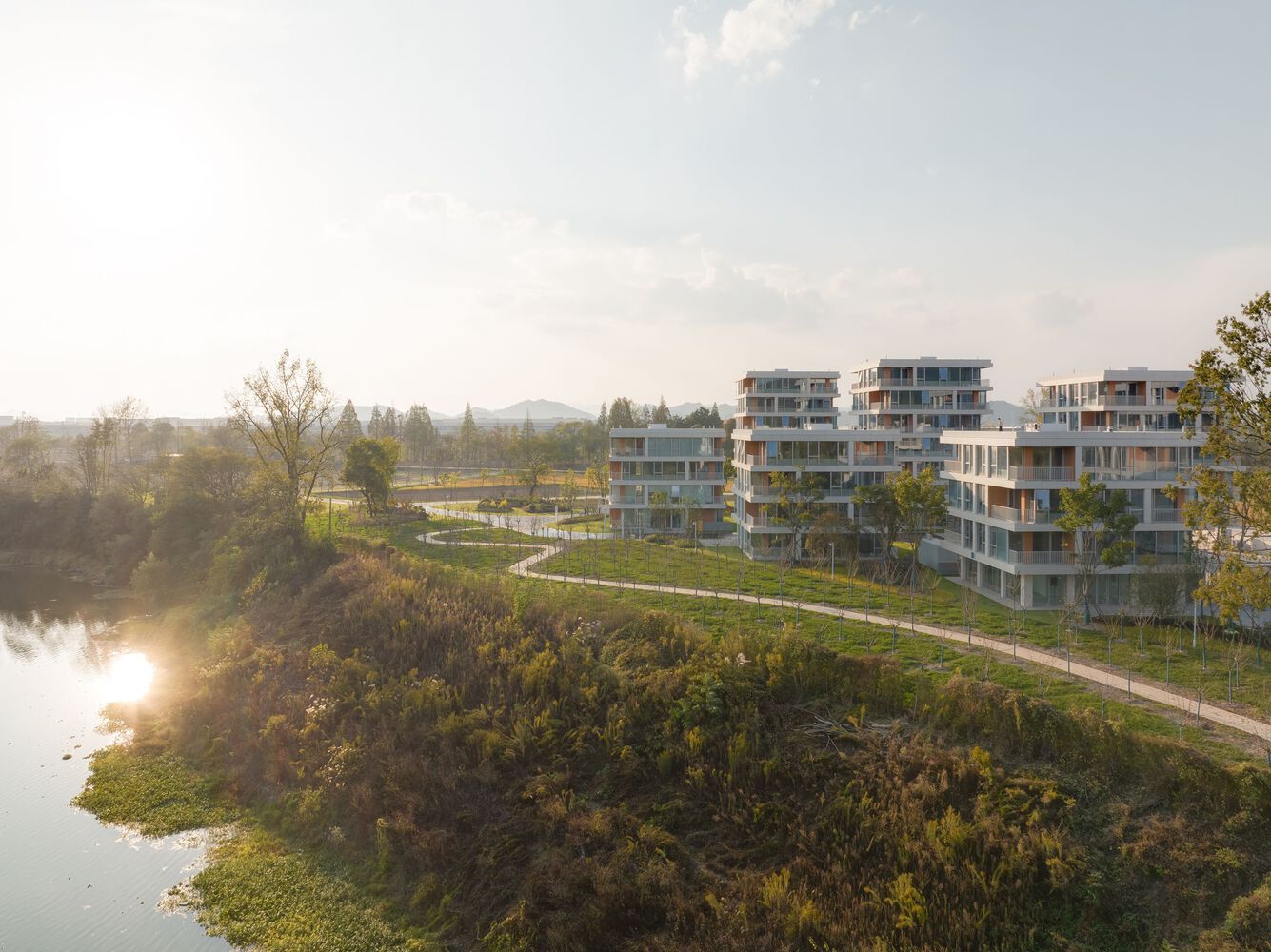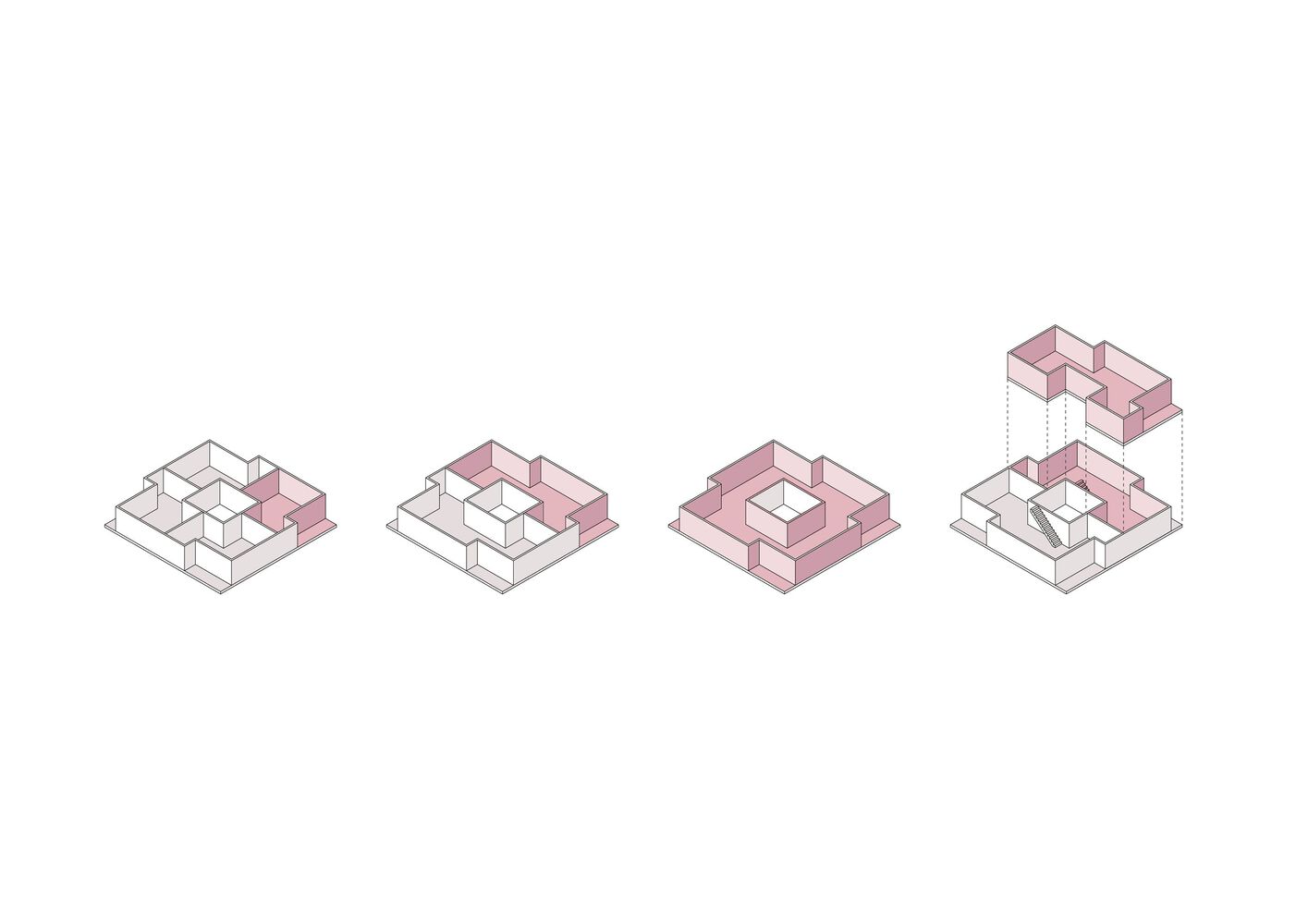














Project: Dongshan Island
Location: Huzhou, China
Architects: MORE Architecture
Area: 25000 m²
Year: 2023
Photographs: Kris Provoost
Dongshan Island is a healthy community-based neighborhood creating an alternative urban typology for urbanization in China. It combines the comforts of urban living with the rural DNA of the site and is focused on creating a healthy community. Yet, the density is high: 100 homes per hectare. The area is car-free and offers outdoor and shared activities for residents. The land around the residential development is used for allotment gardens and farming, stimulating residents and their children to learn about the origin of healthy food.
Urban meets rural - The client, Huazhang Real Estate, wanted to create a residential development on a rural site, for residents to combine the convenience of urban living with the quality of living in the countryside. Instead of the usual urban typologies – high-rise towers - MORE Architecture decided to propose an alternative housing model. The architects suggested a mid-rise urban scheme in which a high density of 100 homes per hectare could be achieved. With a maximum height of 24 meters, the urban villas create an intimate residential environment where the human scale is key.
Background - Over the past decades, China has been urbanizing at an incredible pace. Hundreds of millions of people have changed the countryside for the city. Mostly, this happened in the standard housing typology in China: the xiaoqu, a gated residential compound. This compound usually consists of a north-south oriented, walled-off gated community containing tower blocks. Since the towers are facing south, cores are placed in the north of the building, creating very dull north sides, and overheated south facades. MORE Architecture did profound and extensive research into Chinese urbanization and residential typologies. Understanding the limitations of the existing urban typology, the architects deeply wanted to challenge the status quo. Their goal: a healthy, human-scale neighborhood. MORE developed a mid-rise urban scheme of blocks with a maximum of 24 meters high. The buildings at the waterfront are four floors high, and the ones at the back are six to seven floors. This creates diversity in the plan and an intimate scale at street level. Secondly, the architects developed an alternative housing block typology: the 'urban villa" of 18 x 18m. The buildings have a central core – a novelty in China, where the core of a residential building is usually located at the north façade. Instead, this typology offers apartments with views all around. The urban villa allows for a flexible layout: 1, 2, or 4 apartments per floor, as well as duplexes. The block on the north side of the plan has a slab typology with two cores, creating spacious apartments with views all around.
Relation with landscape - The relation with the surrounding nature plays an essential role. Buildings have a 360-degree orientation, so residents can fully enjoy the surrounding hills and rivers. All apartments have generous balconies with amazing views over the surrounding tea plantations. The buildings are built with a concrete structure of floors and columns, creating flexibility in the infill of the apartments. The structure allows adaptation and change of layout over time. It is easily possible to change the position of walls, making this a resilient plan. For the façade, the architects used ceramic white tiles with a small repetitive curve in them – a small reference to the surrounding bamboo. In China, installations are often attached to the façade after construction is finished. Here, room for individual installations was specifically integrated into the building design. Balconies were accentuated in the façade design, with a timber wall and ceiling, and specially designed curvy handrails. The use of color in the whole project was limited and modest. The facades of glass and white ceramics create unity and clarity in the plan and stand out nicely against the surrounding hills with tea fields.
Community-based - Instead of the ubiquitous 'gated community', MORE Architecture designed a neighborhood as an open community: accessible for everybody, inviting, and permeable. The human scale allows people to easily go for a walk and connect to their neighbors. Dongshan Island is inclusive: the plan is designed to cater to various age groups and lifestyles. The various types and sizes of apartments target a broad range of residents: first-time homeowners, families, and more senior empty nesters. Moreover, the plan targets both rural as well as urban residents. On the ground floor level, some of the blocks are connected, creating shared amenities, including fitness and a kindergarten, where these residents can interact.
Healthy living for all - Moreover, Dongshan Island strives for healthy and sustainable living for all. It is a car-free neighborhood. The intimate, fine-grained urban structure is designed to stimulate people to move around in a healthy way. Walking and riding a bicycle is healthy, but also reduces CO2 emissions. Moreover, the car-free public space makes it safe for children to play. The integration of the landscape makes this a green and pleasant environment to live in, and a great place for families to go outside. Inspired by the work 'Wheatfield' by Agnes Denes, the architects strived to create a meaningful connection between urban and rural in this project. The neighborhood is set in the middle of the farm fields, with allotment gardens all around. Thus, residents and their children to learn about and take part in the farming of a healthy and locally produced diet – the very essence of a healthy life.
Source: MORE Architecture
m i l i m e t d e s i g n – w h e r e t h e c o n v e r g e n c e o f u n i q u e c r e a t i v e s
































